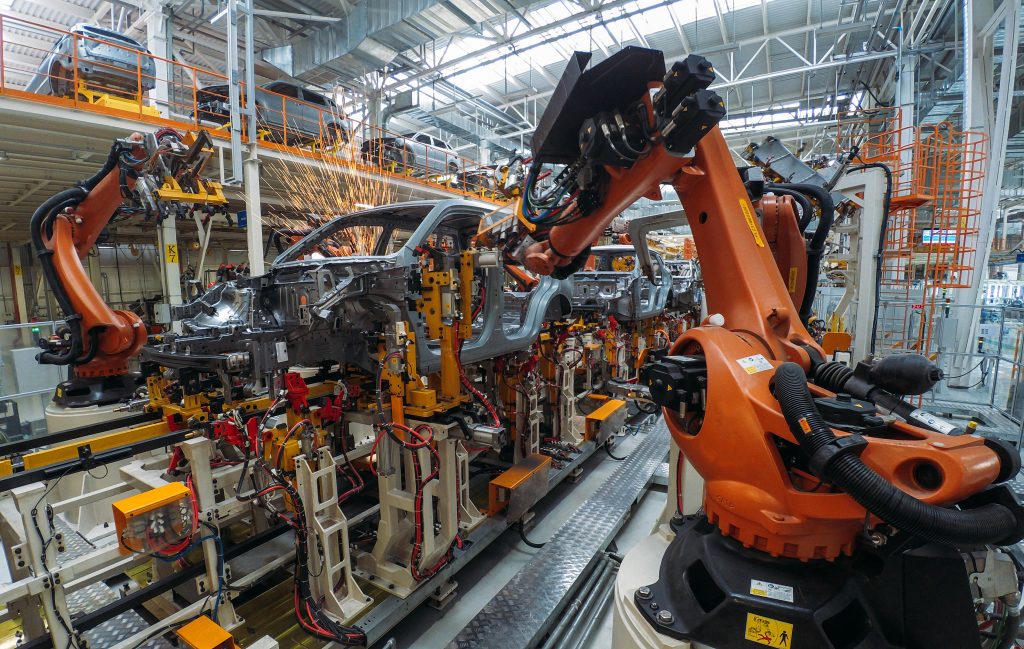The automotive industry is constantly evolving, and with it, so must the tools used to bring new products to market. One tool that has become an essential element of modern car design and manufacturing processes is robots. But which ones are currently being used by the major automakers worldwide?
In this article, we’ll explore today’s most famous robotic systems utilized in the automotive sector – from large-scale automated assembly lines to more miniature industrial robots for performing repetitive or precise tasks on components. By understanding what types of robots are available for use in auto production, you can gain insights into how manufacturers are using these machines now and in years to come.
Table of Contents
What Is A Robot, And What Are Its Uses In The Automotive Industry
A robot is an automated machine capable of performing complex tasks with precision and speed. Robots carry out various tasks in the automotive industry, such as welding, painting, and assembling parts to form cars or other vehicles. These robots are designed to be highly efficient and accurate in their work, making them invaluable to automotive manufacturers worldwide.
Despite still needing manual intervention, the introduction of robots into the industry has drastically improved production processes and allowed for increased safety when working with hazardous materials; they can also perform quickly in harsh environments that would otherwise be too hazardous for human workers. Thus, robots have revolutionized the automotive industry by becoming integral parts of automotive production lines everywhere.
The Most Common Robot Used In The Automotive Industry
The most common robot used in automotive production lines is an industrial robot. This machine usually consists of a robotic arm mounted to a movable base and several associated components, such as sensors and vision systems. These robots can be programmed to carry out precise tasks such as riveting, spot welding, cutting, and grinding parts together.
These robots are highly versatile and can perform multiple tasks on the assembly line and individual components with great accuracy and speed. They also require minimal human intervention, making them ideal for automotive manufacturers who want to reduce labor costs while increasing their productivity. Additionally, these robots are relatively easy to maintain due to their robust design, allowing quick repairs or upgrades when needed.
How This Robot Helps To Improve The Manufacturing Process
The automotive industry has seen significant improvements in its production processes due to the use of industrial robots. These machines are capable of repetitive tasks with great precision and accuracy, allowing automotive manufacturers to create more reliable cars with fewer defects. Furthermore, automotive companies can reduce labor costs by using robotics instead of relying on manual labor while maintaining a high safety level for their workers.
.jpeg)
The introduction of automotive robots has also allowed car companies to stay ahead in the ever-evolving automotive market. By constantly updating their automation systems and implementing new technology, automotive companies can quickly respond to changes in demand and keep up with customer expectations for higher-quality products.
Advantages Of Using Robots In The Automotive Industry
The automotive industry has realized multiple advantages since the introduction of robots into their production processes. Not only have automotive companies benefited from improved production efficiencies, but they have also seen a reduction in labor costs, increased safety for workers, and better quality control.
Additionally, automotive robots can perform highly repetitive tasks without error, allowing automotive manufacturers to reduce waste and save money on raw materials while still producing high-quality vehicles. Moreover, automotive robots can be quickly adjusted or upgraded when needed, allowing automotive companies to remain competitive in a dynamic market.
Disadvantages Of Using Robots In The Automotive Industry
While robots are highly beneficial to the automotive industry, some drawbacks are associated with their use. For instance, many small-scale automotive manufacturers need help to afford the initial investment in robotics technology due to their high costs. Additionally, large companies must train their workers to operate and maintain these machines properly, which can be time-consuming and costly.
Moreover, robots cannot make decisions independently and require humans to program them for specific tasks; thus, any changes that need to be made can only be done manually by an engineer or technician. Lastly, robotics technology is still relatively new and may take some time before it is fully incorporated into the industry as a standard operating procedure.
The Future Of Robotics In The Automotive Industry
Robotics technology is expected to continue evolving in the automotive industry, and its use will likely become more widespread over time. Automotive companies are already using robotics for various tasks, such as spot welding, riveting, cutting, and grinding parts together, drastically increasing their production capabilities.
Additionally, robots are used for material handling and logistics operations in warehouses and distribution centers, helping companies stay ahead of demand while reducing labor costs. Furthermore, autonomous vehicles are now becoming increasingly common on roads across the world, which could revolutionize how we drive.


![How To [pii_pn_ec54b55b1edf2d87] Error Code 2021](https://www.thebestgossip.com/wp-content/uploads/2020/11/outlook-image-3-3.jpg)
![How to solve [pii_email_476aa72074828e21899f] error?](https://expresslatestnews.com/wp-content/uploads/2021/12/pii_email_476aa72074828e21899f.png)
![[pii_email_371defe6ad71f4e4a0a0]?](https://i.ibb.co/rG2wdrf/Solved-Pii-email-e6685ca0de00abf1e4d5-Error-1.jpg)